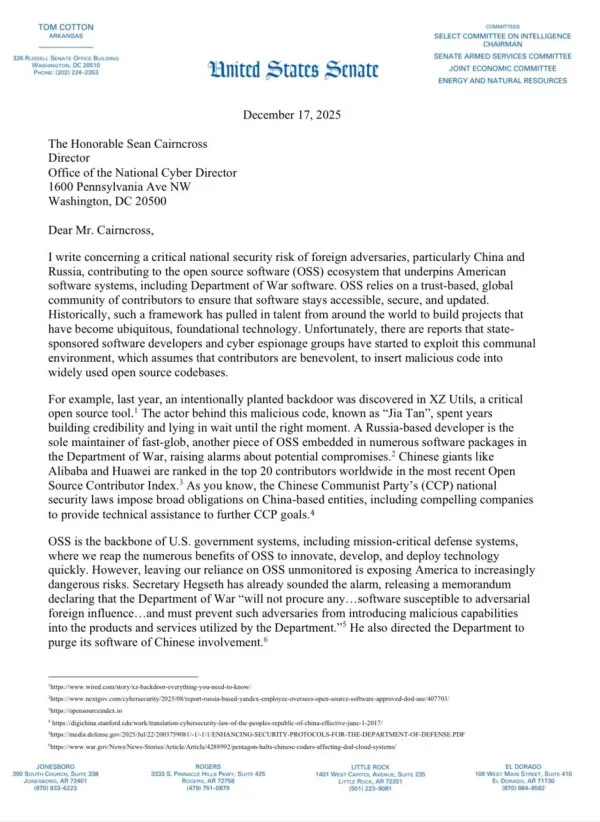The KNP Logistics Ransomware Attack: How One Weak Password Destroyed a 158-Year-Old Company

Executive Summary
In June 2024, KNP Logistics Group—a 158-year-old British transport company founded in 1865—became the latest casualty in the UK's escalating ransomware crisis. A single compromised employee password provided the Akira ransomware group with the keys to destroy what was once one of the UK's largest privately owned logistics companies. The attack resulted in the company entering administration, putting 730 employees out of work and serving as a stark reminder of how basic cybersecurity failures can have catastrophic consequences.
Company Profile: KNP Logistics Group
Founded: 1865 (158 years of operation)
Location: Northamptonshire, UK
Industry: Transportation and logistics
Size: One of the UK's largest privately owned logistics groups
Employees: 730 staff members
Legacy: Nearly two centuries of continuous operation before the attack
KNP Logistics had weathered world wars, economic depressions, and countless industry transformations over its century-and-a-half existence. The company had built a reputation as a reliable logistics provider in the competitive UK transport sector, serving clients across various industries with a substantial fleet and workforce.
The Attack: Timeline and Technical Details
Initial Compromise - June 2024
The attack began with what cybersecurity experts consider one of the most preventable entry points: credential compromise through password guessing. The Akira ransomware group successfully gained initial access to KNP's network by exploiting a weak employee password through what appears to have been a brute-force attack.
Key Attack Vectors:
- Primary Entry Point: Compromised employee credentials via password guessing
- Security Gaps: Lack of multi-factor authentication (MFA)
- Password Weakness: Employee used easily guessable password
- Network Access: Attackers gained lateral movement capabilities once inside

The Akira Ransomware Deployment
Once inside KNP's network, the Akira group deployed their signature ransomware, which:
- Encrypted critical business data across the company's systems
- Locked down internal networks and essential IT infrastructure
- Compromised financial records and operational systems
- Disrupted customer data and service capabilities
- Demanded approximately £5 million in ransom payments
The attack was particularly devastating because it targeted the company's most critical assets—financial systems, customer databases, and operational infrastructure that the logistics company relied upon for daily operations.
The Akira Ransomware Group: A Growing Threat
Operational Profile
The Akira ransomware group has emerged as a significant threat to small and medium-sized enterprises (SMEs) since March 2023:
Statistics:
- Revenue: Estimated $42 million earned in first year of operations
- Attack Volume: Over 250 successful attacks documented
- Target Focus: Primarily SMEs with fewer than 50 employees
- Geographic Scope: UK and US businesses
- Industry Focus: Transportation, logistics, and manufacturing sectors
Tactics, Techniques, and Procedures (TTPs)
Initial Access:
- Credential stuffing and brute-force attacks against weak passwords
- Exploitation of remote access tools and VPN vulnerabilities
- Targeted phishing campaigns against specific organizations
Persistence and Lateral Movement:
- Deployment of backdoors for continued access
- Network reconnaissance and privilege escalation
- Exfiltration of sensitive data before encryption
Impact and Monetization:
- Double extortion model (encryption + data theft threats)
- Targeted ransom demands based on company revenue assessment
- Public leak sites for additional pressure
Business Impact Analysis
Immediate Consequences
The ransomware attack created a cascade of operational failures:
Operational Disruption:
- Complete shutdown of IT systems and digital operations
- Inability to process customer orders or track shipments
- Loss of access to financial records and accounting systems
- Disruption of supply chain and logistics coordination
Financial Impact:
- Loss of daily revenue during system downtime
- Inability to secure crucial new funding due to compromised financial data
- Potential ransom payment consideration (£5 million demanded)
- Administrative and recovery costs
The Human Cost
Beyond the technical and financial impact, the attack had profound human consequences:
Employee Impact:
- 730 jobs lost when company entered administration
- Unknown psychological burden on the employee whose password was compromised
- Loss of institutional knowledge built over 158 years
- Disruption to families and local community employment
Management Burden: Company director Paul Abbott revealed the emotional toll, stating he hasn't informed the employee whose compromised password likely led to the company's destruction, asking, "Would you want to know if it was you?"
Why Recovery Failed
Several factors contributed to KNP's inability to recover:
- Timing: The company was already facing challenging market conditions
- Scale: The attack compromised critical financial and operational systems
- Funding: Inability to secure emergency funding due to compromised financial records
- Recovery Costs: Estimated recovery and security remediation costs exceeded available resources
- Customer Confidence: Loss of client trust due to data security concerns
The Broader UK Ransomware Crisis
KNP's collapse is part of a wider ransomware epidemic affecting UK businesses:
Recent High-Profile Attacks
Major Retail Chains:
- Marks & Spencer: Hit by DragonForce ransomware, estimated weekly losses of £40 million
- Co-op: Confirmed theft of personal data from all 6.5 million members
- Harrods: Suffered significant cyber attack disrupting operations
Attack Statistics and Trends
UK Cyber Breach Costs:
- Average cost per breach: £3.58 million (2023-2024)
- Year-over-year increase in breach costs
- 80% of breaches linked to compromised credentials
SME Vulnerability:
- 56% of ransomware attacks in 2024 targeted businesses with fewer than 50 employees
- Smaller companies often lack dedicated cybersecurity resources
- Higher likelihood of business closure following successful attacks
Password Security: The Fundamental Failure
The Weak Password Problem
Research reveals the extent of password vulnerability:
Attack Speed:
- 96% of common passwords can be cracked in less than one second
- Automated tools can test millions of password combinations rapidly
- Dictionary attacks exploit commonly used passwords and patterns
Common Password Weaknesses:
- Use of personal information (names, birthdates, addresses)
- Common words and phrases
- Predictable patterns (123456, password, company name + year)
- Reuse of passwords across multiple accounts
The Authentication Gap
KNP's compromise highlights critical authentication failures:
Missing Security Controls:
- No Multi-Factor Authentication (MFA): Single point of failure
- Weak Password Policies: Insufficient complexity requirements
- No Account Monitoring: Failed to detect suspicious login attempts
- Lack of Privileged Access Management: Compromised account had excessive network access
Technical Analysis: How the Attack Succeeded
Attack Chain Reconstruction
1. Reconnaissance and Target Selection The Akira ransomware group conducted intelligence gathering on KNP Logistics, identifying it as a profitable target with likely weak security defenses. This phase involved researching the company's digital footprint, employee information, and potential entry points.
2. Initial Access via Password Attack Attackers gained entry to KNP's network by successfully guessing or brute-forcing an employee's password. This credential-based attack provided the initial foothold needed to begin the broader assault on the company's systems.
3. Persistence and Backdoor Deployment Once inside, the attackers established persistent access by deploying backdoors and escalating their privileges within the network. This ensured they could maintain control even if the initial compromised account was detected.
4. Lateral Movement and Network Discovery The ransomware group conducted network reconnaissance to map KNP's internal systems, identifying critical servers, databases, and network assets. They moved laterally through the network to gain access to high-value targets.
5. Data Exfiltration and Staging Before deploying the ransomware, attackers exfiltrated sensitive company data including financial records, customer information, and operational data. This information was staged for potential use in double extortion tactics.
6. System Encryption and Lockdown The Akira ransomware was deployed across KNP's network, encrypting critical business data and locking down essential IT infrastructure. This phase rendered the company's systems inoperable and began the immediate business disruption.
7. Ransom Demand and Payment Negotiation Finally, the attackers presented their ransom demand of approximately £5 million, likely accompanied by threats to publish stolen data if payment was not made within a specified timeframe.
Critical Security Failures
- Perimeter Security: Weak authentication allowed initial compromise
- Network Segmentation: Lateral movement was not restricted
- Endpoint Protection: Insufficient detection of malicious activity
- Backup Security: Recovery systems likely compromised or inadequate
- Incident Response: Inability to contain and recover from the attack
Prevention and Mitigation Strategies
Immediate Security Improvements
Authentication Security:
- Implement Multi-Factor Authentication (MFA) on all user accounts
- Enforce strong password policies with complexity requirements
- Deploy password managers to eliminate weak password reuse
- Enable account lockout policies to prevent brute-force attacks
Network Security:
- Network segmentation to limit lateral movement
- Privileged access management to control admin rights
- Regular security assessments and penetration testing
- Employee security awareness training
Advanced Security Measures
Detection and Response:
- Security Information and Event Management (SIEM) systems
- Endpoint Detection and Response (EDR) solutions
- Network monitoring for suspicious activity
- Incident response planning and regular drills
Business Continuity:
- Secure, offline backup systems with regular testing
- Disaster recovery procedures and alternative operational plans
- Cyber insurance coverage appropriate to business risk
- Supply chain security assessment
Lessons Learned and Recommendations
For SMEs and Transport Companies
- Password Security is Business Critical: Weak passwords can literally destroy companies
- MFA is Non-Negotiable: Multi-factor authentication should be mandatory, not optional
- Employee Training Matters: Regular cybersecurity awareness training is essential
- Backup Strategy: Secure, tested backups can mean the difference between recovery and closure
- Incident Response Planning: Have a plan before you need it
For the Industry
Regulatory Considerations:
- Enhanced cybersecurity requirements for critical infrastructure
- Mandatory incident reporting and information sharing
- Industry-specific security standards and compliance frameworks
Collective Defense:
- Threat intelligence sharing between logistics companies
- Industry consortiums for cybersecurity best practices
- Government support for SME cybersecurity initiatives
Government and Law Enforcement Response
NCSC Warnings
Richard Horne, CEO of the National Cyber Security Centre (NCSC), emphasized the urgency: "We need organisations to take steps to secure their systems, to secure their businesses."
Recent Enforcement Actions
UK authorities have begun taking action against cybercriminal networks:
- Four suspects arrested in connection with retail cyber attacks
- Increased international cooperation on ransomware investigations
- Enhanced focus on disrupting ransomware-as-a-service operations
Conclusion: A Preventable Tragedy
The collapse of KNP Logistics represents one of the most devastating examples of how basic cybersecurity failures can destroy even well-established businesses. A company that survived 158 years of economic upheaval, technological change, and global crises was brought down in weeks by criminals exploiting a single weak password.
This case serves as a critical wake-up call for businesses of all sizes, but particularly for SMEs that may believe they are too small to be targeted. The Akira ransomware group's success against KNP demonstrates that cybercriminals are increasingly focused on smaller companies with weaker defenses and limited recovery capabilities.
The tragedy is that this attack was entirely preventable. Basic security measures—multi-factor authentication, strong password policies, network segmentation, and secure backup systems—could have either prevented the attack entirely or limited its impact sufficiently for the company to survive and recover.

As the UK faces an escalating ransomware crisis, the KNP case stands as both a cautionary tale and a call to action. No company, regardless of its history, size, or market position, can afford to neglect cybersecurity in today's threat landscape. The cost of inaction, as KNP's 730 former employees can attest, extends far beyond financial losses to encompass human livelihoods, community impact, and business legacy.
Organizations must recognize that cybersecurity is not just an IT issue—it's a fundamental business survival requirement. The question is not whether your organization will be targeted, but whether it will be prepared to survive when the attack comes.
Key Takeaways
- Single Point of Failure: One weak password can destroy an entire company
- Human Cost: Cybersecurity failures affect real people's livelihoods
- Preventable Tragedy: Basic security measures could have prevented this outcome
- Industry Impact: The transport and logistics sector faces specific vulnerabilities
- Collective Responsibility: Protecting businesses requires industry-wide action
The legacy of KNP Logistics should not be its destruction by cybercriminals, but rather its role as a catalyst for improved cybersecurity practices across the UK business community. Only through collective action, improved security practices, and continued vigilance can we prevent other century-old companies from suffering the same fate.







